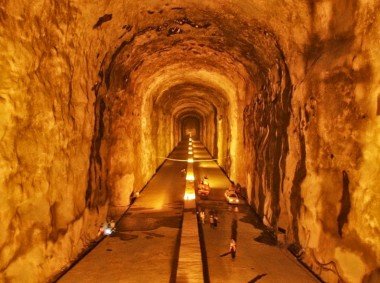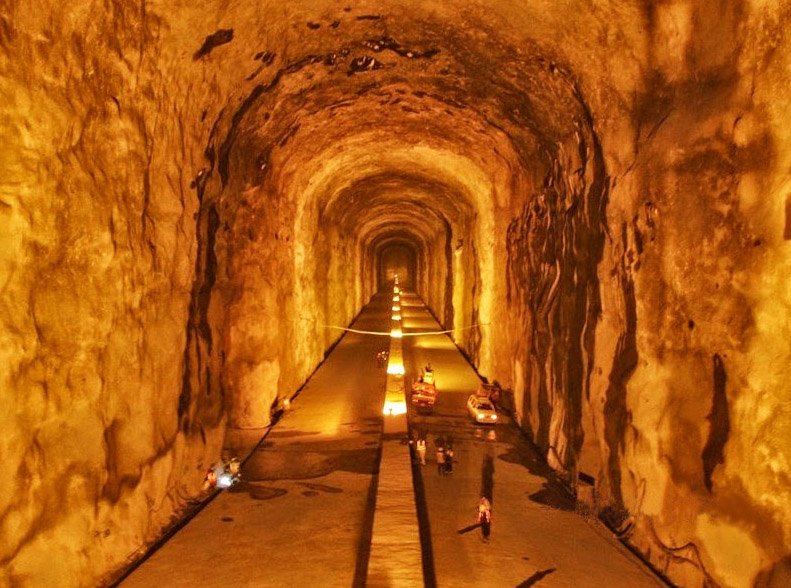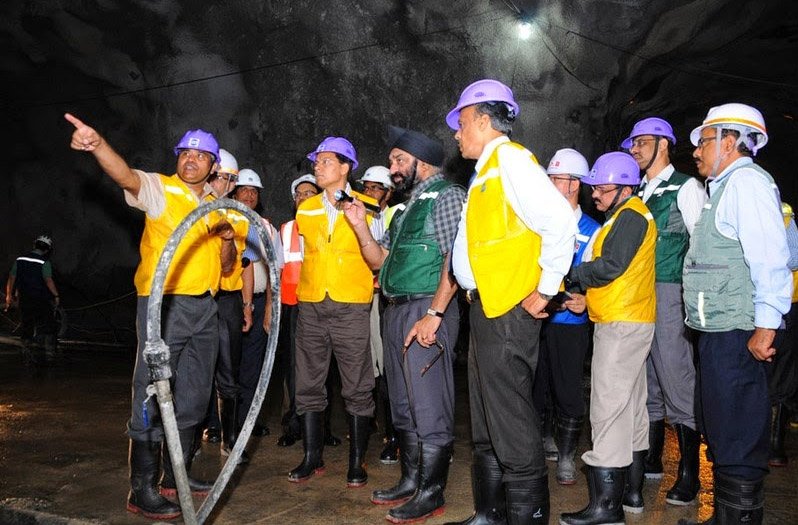Articles features
India building strategic oil reserves to meet emergencies

Taking advantage of weak global crude prices, down 42.5 percent since
July 2014, the government is spending Rs.4,948 crore ($800 million) to
shore up strategic oil reserves in the first phase of such a project,
which can be used during emergencies to power India for around a
fortnight.
Two giant, rock-cut caverns will soon be pumped full
of crude oil in the eastern port of Vishakhapatnam, as part of a set of
new underground facilities that will hold India's emergency oil
reserves, reports IndiaSpend.
The new storage facilities were approved in January 2006. Its features:
-
Concrete tanks being built at Vishakhapatnam port that with the other
underground facility of natural caverns can hold 1.33 metric tonnes of
crude, or the equivalent of 129,221 truck-tanker loads.
- Money
left over after filling the Vishakhapatnam storage will be used to buy
more crude to fill two more facilities -- at Mangalore and Padur, both
in Karnataka on India's western coast.
- A series of pipes will
run from the surface and descend into the underground rock caverns.
Crude oil will be pumped into the caverns through these pipes.
-
Put together, the three facilities, managed by the Indian Strategic
Petroleum Reserves Ltd, can hold 5.33 million metric tonnes of crude
oil, or the equivalent of 517,857 truck-tanker loads of 12 kilolitre
capacity each.
- The strategic reserves would hold enough crude
oil to power India for about 13 days, based on the country's demand,
according to data tabled in Rajya Sabha.
India needs these
emergency oil reserves since it is a net importer of oil. The Ministry
of Petroleum and Natural Gas had estimated that in 2014-2015, the
country will import 83 percent (228.41 million metric tonnes) of its
oil requirement.
The domestic production has been somewhat
stagnant. It was 37.7 million metric tonnes in 2010-11 and stood at 38.8
million metric tonnes in 2014-15. Over five years, India has imported
more than 80 percent of its crude-oil requirement.
The erstwhile
Planning Commission, and now re-named Niti Aayog, in its Integrated
Energy Policy of 2006, said supply, market and technical risks were
major threats to India's energy security.
It recommended that India "maintain a reserve equivalent to 90 days of oil imports for strategic-cum-buffer stock purposes".
Thus,
the country will require additional crude-oil storage of approximately
13.32 million metric tonnes by 2019-20, according to rough estimates,
based on existing storage with oil companies and the new facilities
being built by Indian Strategic Petroleum Reserves Ltd.
Therefore,
the Indian government is planning to build four more facilities for
strategic crude reserves at Chandikhol in Orissa, Bikaner in Rajasthan,
Rajkot in Gujarat and Padur in Karnataka.
These will have a combined storage capacity of 12.5 million metric tonnes of crude oil, as per data with the new company.
But
India has to catch up. The global standard for strategic oil reserves,
as set by the International Energy Association (IEA) for
member-countries, is 90 days of net oil imports.
The US holds 95
million metric tonnes of strategic reserves, the highest by any country
in the world. Japan, which like India is dependent on imported oil, has
the second highest reserves with 44 million metric tonnes.
China,
like India, is in the process of shoring up its strategic oil reserves.
As of November 2014, it had acquired 12.4 million metric tonnes. While
India now has made a start, there are countries that are well ahead.
(In arrangement with Indiaspend.org, a data-driven, non-profit, public-interest journalism platform)

 Inside a rock-cut cavern in Vishakhapatnam into which crude oil will be pumped as part of India's multi-location project to build strategic reserves to meet exigencies. (Photo: Courtesy, Indian Strategic Petroleum Reserves Ltd)
Inside a rock-cut cavern in Vishakhapatnam into which crude oil will be pumped as part of India's multi-location project to build strategic reserves to meet exigencies. (Photo: Courtesy, Indian Strategic Petroleum Reserves Ltd) 






































